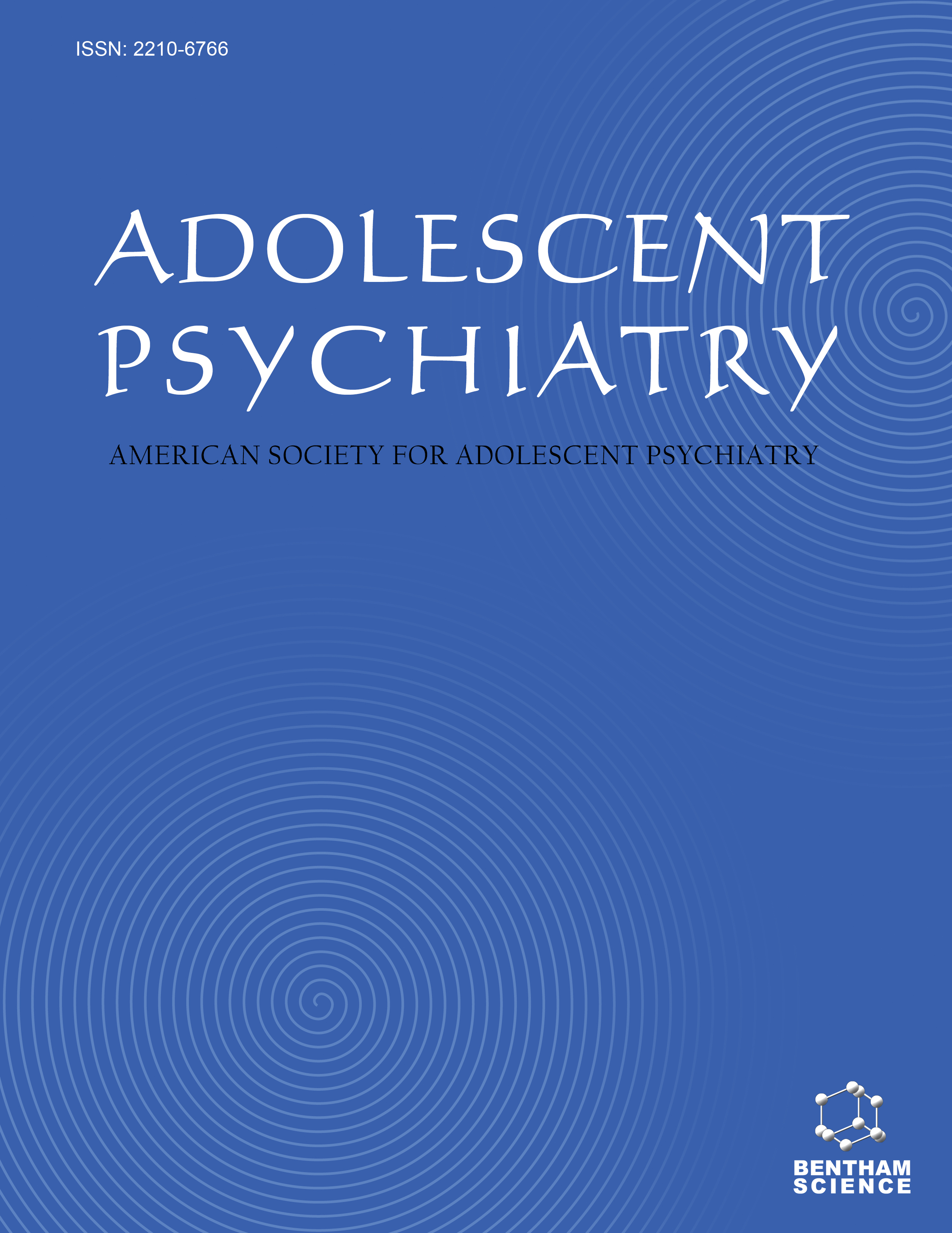- Home
- A-Z Publications
- Adolescent Psychiatry
- Previous Issues
- Volume 4, Issue 3, 2014
Adolescent Psychiatry - Volume 4, Issue 3, 2014
Volume 4, Issue 3, 2014
-
-
Editorial: From Research to Clinical Practice in Adolescent Psychiatry
More LessAs I looked for a unifying theme in the articles published in this issue, it occurred to me that all of the articles deal with bridging the gap between research and clinical practice. As Camille Wilson and colleagues point out in the lead article in this issue, there has been a longstanding debate over the relationship between autism spectrum disorders and schizophrenia. Both of these disorders are now understood to be neurodevelop Read More
-
-
-
Blurred Edges: Evolving Concepts of Autism Spectrum Disorders and Schizophrenia
More LessAuthors: Camille Wilson, Emily Kline, Gloria M. Reeves, Laura Anthony and Jason SchiffmanBackground: Adolescents who have autistic features, such as social communication deficits, as well as disorganized thinking and bizarre behavior, present diagnostic challenges for clinicians as well as for researchers. Autism and schizophrenia are both neurodevelopmental disorders; they have an interconnected history that has diverged diagnostically, but retains many shared characteristics. Once conceptualized as a type of sc Read More
-
-
-
On Utilizing an Attachment-based Model for Assessment in Adolescence
More LessBackground: In the last twenty years interest in the clinical implications of attachment theory has greatly grown. The perspective of attachment seems to be particularly relevant with regard to the study of adolescence, insofar as the restructuring of the self that occurs during this developmental phase can lead to different outcomes in accordance with the different attachment organizations. Also the psychotherape Read More
-
-
-
Stress-related Risk Factors for the Maintenance of Major Depression in Adolescent Girls
More LessAuthors: Ulrike Schmidt-Gies and Reinhold LaessleBackground: Major depressive disorder is a highly prevalent disorder in adolescence that entails significant lifetime risk for repeated episodes of depression and other disorders Furthermore, it can have a negative impact on academic and psycho-social functioning with long-lasting effects. Thus, identification of the most relevant risk factors for the continuation of major depressive disorder is important. Method: Seventy one Read More
-
-
-
Fostering Resilience: Protective Agents, Resources, and Mechanisms for Adolescent Refugees’ Psychosocial Well-Being
More LessBackground: Adolescent refugees face many challenges but also have the potential for resilience. The purpose of this study was to identify and characterize the protective agents, resources, and mechanisms that promote their psychosocial well-being. Methods: Participants included a purposively sampled group of 73 Burundian and Liberian refugee adolescents and their families who had recently resettled in Boston an Read More
-
-
-
Being or Feeling the Right Weight: A Study of Their Interaction with Depression among Adolescents
More LessObjective: High and low body mass index (BMI) values and inaccurate body weight perceptions (BWP) (i.e.: mismatch between BMI and BWP) are known risk factors for depression/suicide. However, the relationships between BMI, BWP and depression are still insufficiently understood in adolescents, and data are lacking concerning the entire range of BMI in either gender. This study aimed to investigate how BMI and BWP Read More
-
-
-
The Bullying Prevention Plan: An Approach to Youth who Bully Others
More LessAuthors: Anat Brunstein Klomek, Barbara Stanley and Andre SouranderBackground: Bullying among adolescents has increasingly been recognized as a highly prevalent problem that has long lasting consequences for both bullies and victims. Numerous school-wide interventions have been developed but there is a need for interventions that can be implemented by clinicians working with individual clients and patients who bully others. Methods: This manuscript describes a safety plan for youth wh Read More
-
-
-
Maryland's Evolving System of Social, Emotional, and Behavioral Interventions in Public Schools: The Maryland Safe and Supportive Schools Project
More LessBackground: Schools serve as an important context for the prevention of behavioral and mental health problems. There is growing interest among educators in the application of a three-tiered public health prevention model to prevent a range of behavioral and mental health concerns, and in turn, improve academic and social-emotional outcomes for students. One such multi-tiered system of supports framework used by scho Read More
-
-
-
Fulminant Somatization: Medical Investigation in Trauma Survivors
More LessAuthors: Gordon Harper and Oommen MammenBackground: Somatic symptoms are common in trauma survivors, including those who have experienced sexual abuse. These symptoms sometimes continue or get worse during the course of medical investigations, provoking even more investigation, and leading to a vicious circle involving invasive medical procedures and frustrating attempts at diagnosis and care. In such cases, the symptoms may be considered f Read More
-
Most Read This Month
Article
content/journals/aps
Journal
10
5
false
en


